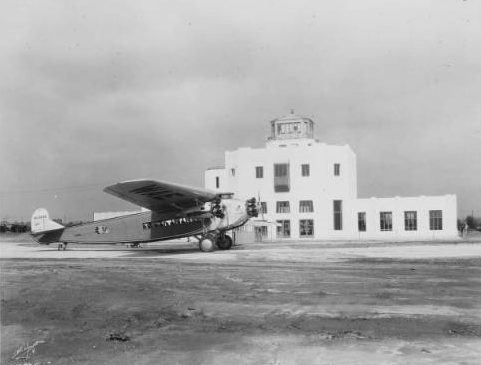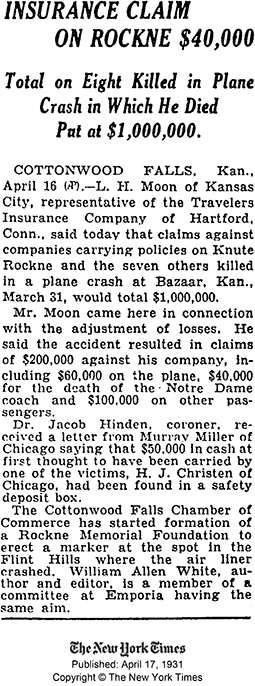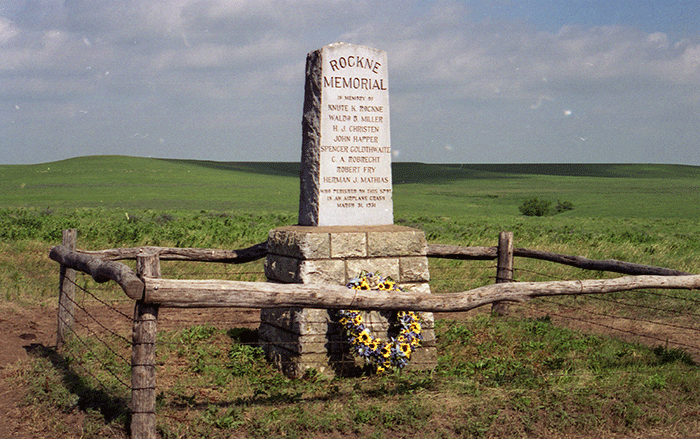OTHER RESOURCES
A very readable volume about the Grand Central Air Terminal is this book:
Underwood, John. 1984. Madcaps, Millionaires and 'Mose'. Heritage Press, Glendale, CA. 144pp.
---o0o---
Thanks to Guest Editor Bob Woodling for help researching this page.
---o0o---
YOU CAN HELP
I'm looking for information and photographs of this airplane to include on this page. If you have some you'd like to share, please click this FORM to contact me.
---o0o---
SPONSORED LINKS
HELP KEEP THESE WEB SITES ONLINE
FOR YOUR CONVENIENCE
You may NOW donate via PAYPAL by clicking the "Donate" icon below and using your credit card. You may use your card or your PAYPAL account. You are not required to have a PAYPAL account to donate.
When your donation clears the PAYPAL system, a certified receipt from Delta Mike Airfield, Inc. will be emailed to you for your tax purposes.
---o0o---
FOKKER F-10A NC999E
"The weather here is getting tough. We're going to turn around and go back to Kansas City."
 |
This large, transport aircraft, S/N 1063, appears twice at the Grand Central Air Terminal (GCAT). Built ca. 1929, it was a workhorse for T.W.A., traveling the route from Los Angeles to Kansas City, MO and return. Chances are good it landed many more times at GCAT, but was not recorded.
It appears only twice in our Registers; both times at GCAT. The first time it was recorded in the GCAT Register was on Monday, March 23, 1931. The pilot was unidentified, but was probably LaMar Nelson. They had arrived from Kansas City, MO. No passenger numbers were written in the Register.
At left, courtesy of the Huntington Digital Library (HDL), on March 6, 1930 NC999E appears on the ground at Alhambra, CA, an early maintenance depot for Western Air Express (WAE). Note that the airplane wears WAE livery. Within the next year WAE was merged into T.W.A. The photo shows NC999E about a year before we find it in the Register. The owner of NC999E was identified as T.W.A. in the GCAT Register.
The second appearance of the airplane in the GCAT Register was three days later, on Thursday, March 26, 1931 at 5:03PM. The pilot was identified as LaMar Nelson. He carried nine passengers plus his copilot. Tower Operator A.J. Lygum wrote their destination as Kansas City. But, given the time of day, they had probably arrived at GCAT from Kansas City.
To say the airplane was ill-fated is an understatement. About five days after its last visit to GCAT, NC999E suffered an accident about 2.5 miles southwest of Bazaar, KS. The accident was on March 31, 1931, between 10:45 and 10:55AM (victims' wrist watches and the airplane's chronometer were stopped in that time range). The pilot was Robert G. Fry (age 32) and the copilot was Herman J. "Jess" Mathias (30), neither of whom appear in any of our Registers. Their $80,000 airplane had accumulated 1,887 flight hours since new. It was copilot Mathias who made the radio call quoted in the header of this page. There was no post-crash fire.
According to this summary report of documentation related to the accident (PDF 4.0Mb, 15pp.), both pilots were experienced and current. One discrepancy was that Fry had flown 200 hours during the past 30 days for an average of about seven hours per day. By contrast, 21st century commercial transport pilots are limited by regulation to fly 100 hours in any calendar month and 30 hours in any seven consecutive days. In spite of his youth, Fry was probably very tired, given there was no autopilot or other technology in early Fokker transports to ease a pilot's labors. And instruments for "blind flying" would not be proven, accepted and installed in commercial transports for another two or three years.
The linked report states that eye-witnesses saw the airplane flying at approximately 5-600 feet in a northeasterly direction. The weather they flew in was generated by a cold front. It contained variable, gusty winds, precipitation and probably freezing and low-visibility conditions. March weather in Kansas is frequently cold and unsettled. Two radio transmissions from the copilot (see above) inquired about weather conditions ahead at Wichita. WIchita reported clear conditions. T.W.A. flight 599 was westbound toward Los Angeles from Kansas City via Wichita, KS, Amarillo, TX, Albuquerque, NM, Winslow and Kingman, AZ, Los Angeles and Alameda, CA. A northeasterly flight path suggested it had, indeed, turned around to avoid the advancing eastbound front, and was headed back to Kansas City.
 |
Fatalities consisted of six passengers, one of whom was the popular football coach, Knute Rockne (age 43), and the two pilots. According to a contemporary newspaper, the other passengers were H. J. Christen (Chicago), J. H. Happer (Chicago), Waldo B. Miller (Hartford, Conn), Spencer Goldthwaite (Alhambra) and C. A. Robrecht (Chicago). In the final analysis, the Transport-rated and competent pilots were exonerated of any fault. Flight 599 was the victim of a juxtaposition of meteorology and aircraft construction that combined on a single day to cause its demise. Of course, because of the VIP passenger and initially undefined causation, hundreds of news articles appeared within days and for years afterwards. There was the insurance aftermath, too, as cited in The New York Times of April 17, 1931, right.
The official finding was, "Wing separated following aileron flutter caused by structural failure." The wings of F-10 models were made of wood, glued with a water-soluble adhesive (casein glue), and covered with wood veneer and fabric. The structure was deemed "waterproof." However, pre-crash maintenance records and post-crash inspection and testimony documented and verified that the wooden structure of the wing was compromised by water.
Testimony and letters recorded in the document linked above also cited a long-known history of observed wing flutter in the model F-10 under certain flight conditions. One passage stated, "...instructors would never allow the plane to exceed the cruising speed, 'being afraid of the roof coming off.'" Elsewhere, before and after the fact, statements were made as to the failure of the adhesive.
A contributing factor was clearly the weather, which, because of gusts or ice, or both, further compromised the wing structure and flight instruments. U-shaped chunks of ice were found near the wreck, suggesting that ice had formed around prop hubs, struts and flight instruments projecting into the slip stream (namely the venturi and pitot). The ice-blocked instruments could have resulted in the pilots' erroneous interpretation of cockpit instruments while in the clouds, leading to disorientation, unusual attitudes and loss of control of the airplane. Their low operating altitude would not provide enough time to react to correct an unusual attitude when they broke into the clear.
The "Rockne Accident," as the incident became known, was responsible for a sea-change in airline operations, maintenance and regulations, and in aircraft design. On May 4, 1931, Clarence M. Young, Assistant Secretary of Commerce for Aeronautics, and Register pilot, barred all F-10s and F-10As built during 1929 from carrying passengers until they had been thoroughly inspected. The Rockne Accident was responsible for the rapid decline and eventual elimination of wooden structure for transport aircraft and a transition to all-metal designs. With this change, as well as regulatory changes in maintenance schedules, instrumentation and pilot currency and rest, commercial airline travel developed from the most dangerous way to travel in the 1920s to the safest. A lot has happened in the short 85 years since the accident.
Guest Editor Bob Woodling (top, left sidebar) states, "About 15 years ago I visited the crash site of NC999E near Bazaar in Chase County, KS. .... There is a stone monument at the crash site memorializing the victims and because the monument is in a pasture, the grazing cattle stir up the ground around it. This activity brings small airplane bits to the surface, mostly shattered glass, plastic, and metal, some of which I collected. The Chase County Historical museum in nearby Cottonwood Falls has a glass case with larger airplane parts on display, including a piece of the fuselage fabric covering." Below is a photograph he took of the Rockne Memorial monument in 2000.
 |
A lay summary of the aircraft, accident and aftermath is at the link. There are many Web links to Knute Rockne, NC999E, and the "Rockne Accident." Several complete articles are available on the Web that go into more or less detail about the crash and Rockne. Numerous photographs are also online. The license for the airplane was cancelled April 15, 1931.
---o0o---
SPONSORED LINKS
THIS PAGE UPLOADED: 01/26/16 REVISED:
